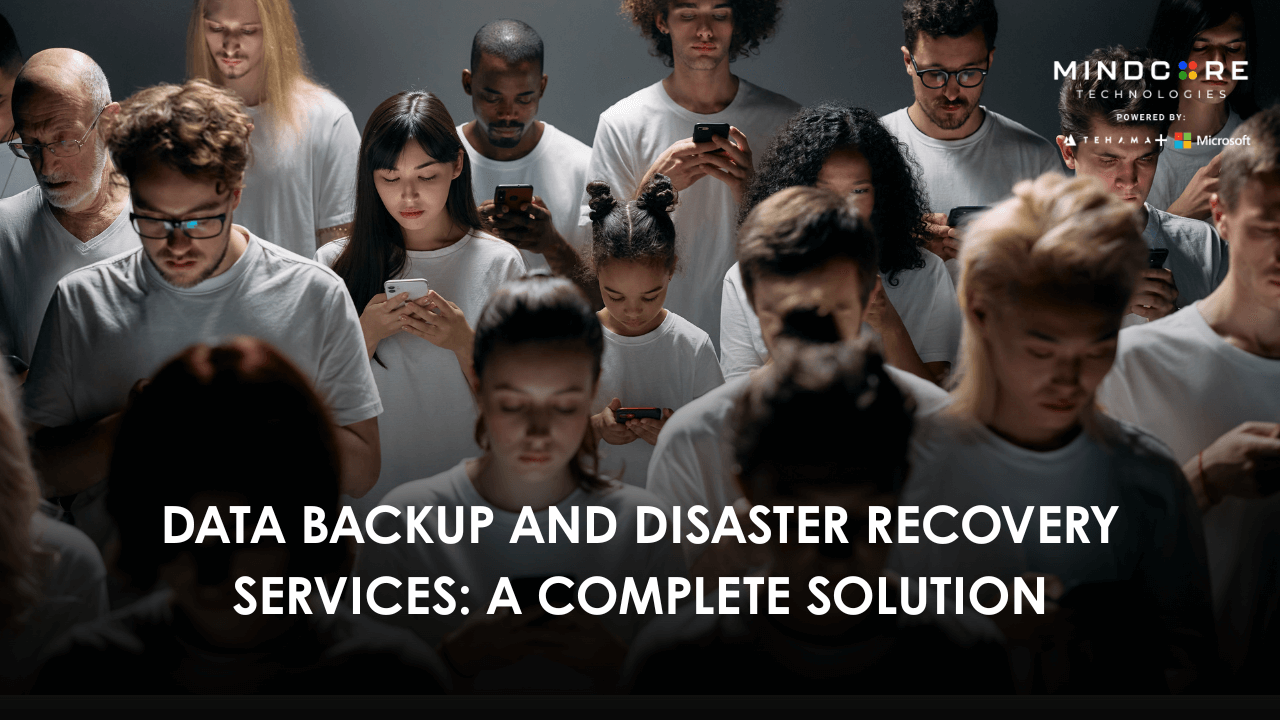Many businesses think they are protected just because they back up their files. But what happens when a server crashes or a cyberattack hits, and those backups can’t be restored properly? The truth is, data backup alone won’t save your business if you don’t have a recovery plan in place. You need both data backup and disaster recovery services working together.
In this post, we’ll walk through how these two services are different, how they support each other, and why combining them gives you a stronger defense against downtime and data loss.
Why Backup Alone Is Not Enough
Backups are important, but they only solve half the problem. A backup simply creates a copy of your data. It does not guarantee that you can restore that data quickly or easily after a failure. Some businesses find out too late that their backups are outdated, corrupted, or not set up to restore full systems. When that happens, they face delays, confusion, and even permanent data loss.
A complete recovery strategy needs more than just saved files. It needs a tested and reliable way to bring your systems back up. That’s why disaster recovery testing is important. It helps confirm that your backups can actually work when it matters most.
The Role of Data Backup in Disaster Recovery
Data backup is the process of copying files, databases, or entire systems so you can restore them if needed. There are different types of backups:
- Full backups copy everything
- Incremental backups save only what changed since the last backup
- Differential backups save changes since the last full backup
Good backup systems also include version history, encryption, and secure storage. Backups can be stored locally or in the cloud. Many businesses use cloud disaster recovery services because they offer offsite protection and access from anywhere. These cloud-based solutions are now common in modern data protection plans.
What Disaster Recovery Adds to the Picture
Disaster Recovery is not just about storing data. It is about all the procedures, mechanisms, and persons involved in the restoration of your systems after a failure.
It includes:
- Setting recovery goals such as RTO (Recovery Time Objective)
- RPO (Recovery Point Objective)
- Creation of recovery workflows
- Using automation to apply reductions in downtime
- Have a plan to restore both data and infrastructure
Some companies just use backup disaster recovery services, which offer a consolidation of storage and recovery, thus saving time and ensuring that the two backup and recovery remain connected.
Building a Complete Data Backup and Disaster Recovery Strategy
Having a full solution means more than installing software. It takes planning.
1. Identify Your Critical Systems and Data
Start by listing what parts of your business can’t afford to be offline. Match each system to a recovery plan that fits its level of importance. Make sure to consider both customer-facing systems and internal tools that keep your team productive.
2. Choose the Right Mix of Tools
Use both local and cloud backups to avoid single points of failure. Choose tools that make backups automatic and allow quick restoration. It’s also important to select tools that integrate well with your existing systems, so recovery feels like a smooth process, not a workaround.
Some providers, like ATI disaster recovery services, offer end-to-end support that covers both the storage and the recovery side. This is helpful for businesses that want one team to handle the full process.
3. Set RTO/RPO Goals and Test Them
Figure out how long your business can survive without certain systems. Then build your plan to meet those goals. Don’t forget to document these goals clearly and share them across departments so everyone knows what to expect in case of a disaster.
Disaster recovery planning also includes regular testing. Without testing, you won’t know if your plan works until it’s too late. Even a simple quarterly drill can expose gaps and help you improve before a real incident happens.
When Do You Need Both Backup and Recovery Services?
Most businesses today need both, but especially if:
- You handle sensitive or regulated data
- You rely on real-time systems or transactions
- You can’t afford long downtime periods
- You have multiple teams or locations
These types of businesses also benefit from IT disaster recovery services that keep both technology and operations in sync. When recovery is part of your regular workflow, you save time and protect your data more effectively.
What Happens Without a Recovery Plan?
Even if your data is backed up, problems can still happen:
- Files may not restore properly
- Systems may stay offline for hours or days
- Teams may not know who is responsible for the recovery steps
Without a recovery plan, a disaster turns into confusion. The longer your systems stay down, the more you risk losing customers, damaging your brand, or breaking compliance rules.
That’s why the importance of a disaster recovery plan for businesses should never be overlooked. It’s not just about having the files. It’s about knowing what to do with them.
Choosing a Provider That Offers Both Backup and Recovery
When looking for a provider, don’t just ask about storage space. Ask how they help restore your systems, not just protect your files.
Here are a few things to look for:
- Do they have clear service level agreements (SLAs) for recovery time?
- Can they handle both cloud and local systems?
- Do they help with disaster recovery testing?
- Do they provide monitoring and 24/7 support?
Some disaster recovery service providers offer bundles that cover everything from setup to testing. These are ideal for businesses that want a full solution without dealing with multiple vendors.
Final Thoughts: Two Halves of the Same Whole
Backup without recovery is like having a parachute with no way to open it. The tools and planning must go hand in hand. Data backup and disaster recovery services protect your business from the unexpected. When used together, they help you bounce back faster and with less stress.
In today’s world, downtime is expensive. But with the right strategy, your business doesn’t have to stop when something goes wrong. It just keeps moving forward.

